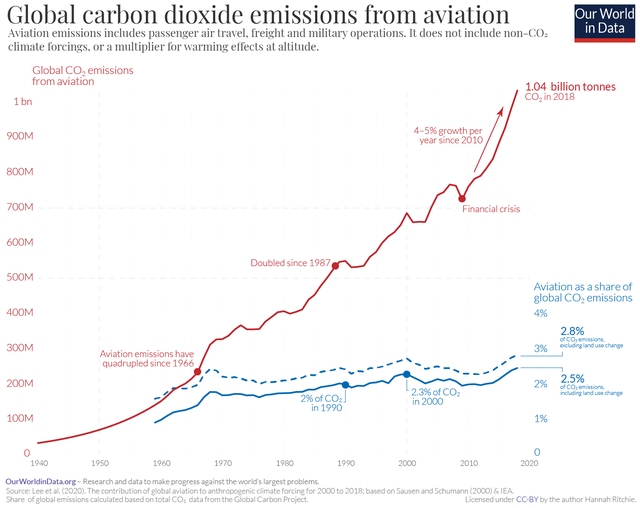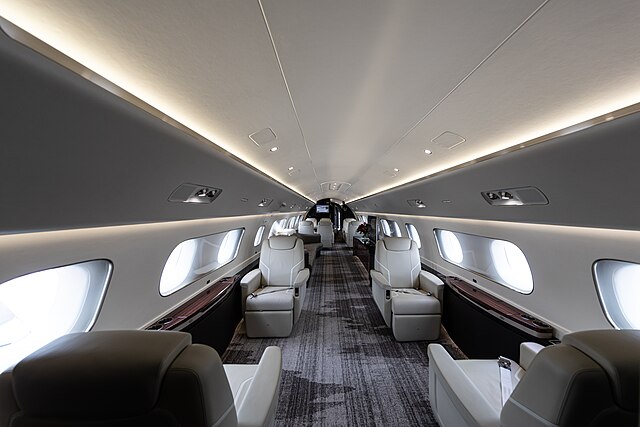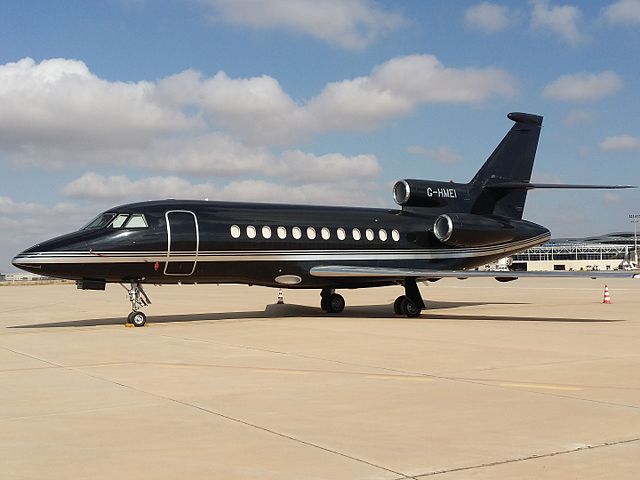
Private jets, symbols of luxury and exclusivity, cast a long, dark shadow on our planet. These enormous airplanes, often carrying a single passenger, consume vast quantities of fuel and emit disproportionate levels of greenhouse gases. However, these are only a few of the types of wastes produced by the aviation industry.
In an era marked by growing environmental consciousness and urgent calls for sustainability, the unchecked accumulation of private jets is a glaring indication of our priorities. Despite commercial aviation’s relatively more efficient state, private jet travel is essentially unregulated and therefore available to a few at an emissions cost that would beggar belief. While the global imperative to cut emissions has yet to be stagnant, the unregulated growth in private jet travel presents virtually all challenges ever facing sustainability-minded living.
Recent talks about private jets
Many celebrities, such as Taylor Swift, have slammed private jets, especially for short trips. Taylor Swift has been called out for taking a 13-minute plane ride less than the length of her driveway. As a result, they have been slammed for their effect on the environment, with such flights accounting for significant carbon emissions. A flight-tracking account has also been tracking her flights on private jets, drawing broad public attention to them. The account reported that the short, 28-mile flight consumed a substantial amount of resources. It burned through 79 gallons of jet fuel, weighing 530 pounds, for $443. Most importantly, this brief journey released a significant 0.8342 tons of carbon dioxide into the atmosphere.
The backlash over Taylor’s travels stems from the time when she was slammed last year for her carbon dioxide (CO2) emissions due to flying. It was revealed that the singer-songwriter’s flights produced 138 tons of CO2 emissions to date, leading many to criticize her private jet use.

American singer-songwriter Taylor Swift was heavily criticized for her CO2 emissions.
In 2019, Senator Bernie Sanders took a lot of flack for all the private jets he was flying around in. The pushback in response to this was intense, especially considering how strongly Sanders has come out supporting such sustainability measures as the Green New Deal, which certainly is no small share of damage mitigation from climate change and environmental preservation.
On the one hand, private jets have an impressive environmental debt due to various factors, such as their exorbitant carbon emissions and fuel consumption, that are at odds with Sanders pleaded sustainability principles. Costco, on the other hand, is now selling private plane memberships for a year to encourage solo air travel. Most of these memberships, which usually cost more than $17k per month, give customers the ability to fly solo on private jets. This prize brings into question the environmental impact of such luxury travel choices, with private jets being far less fuel-efficient and incredibly CO2-intensive on a passenger basis compared to commercial flights. The increased attention on private air travel further underscores the broader dilemma, in which consumer luxury clashes with sustainability.
A small group of extremely rich individuals are responsible for the disproportionately large amount of pollution from airplanes. These rich people who travel short distances through airplanes, significantly contribute to climate change.
Private jets in Glasgow
The flight-tracking service, FlightRadar24, studied the number of non-commercial flights touching down at Glasgow, Prestwick, and Edinburgh airports since October 27, excluding cargo tours. BBC news reports say there were approximately 182 such flights, roughly double the number from the previous six days. This count does not include certain national chartered flights like President Biden’s Air Force One. According to the BBC, 76 private jet or VIP flights landed in the Glasgow area between October 28 and November 1, 2021, according to aviation analytics provider Cirium.

The Boeing 757 is a mid-sized, narrow-body, twin-engine jet airliner that is commonly used for medium to long-haul flights at Glasgow International Airport.
Private jets are notorious for their immense carbon footprint
In other words, flying burns fuel and releases (mainly CO2) greenhouse gases into the atmosphere that contribute to global warming. Emissions per person per mile flown are considerably higher than every other form of transport, says a report by the BBC. However, they stand to change drastically depending on factors such as aircraft size, occupancy levels, and fuel efficiency. It is worth mentioning that with private jets, the CO2 emitted per passenger is at a far higher level compared to commercial flights.

The graph highlights the significant growth in aviation emissions over the past few decades.
For example, a private jet flight from Rome to Glasgow—something some G20 leaders did for COP26—would last two hours and 45 minutes and burn 2,356 liters of Jet-A fuel. A flight of this length generates 5.9 tons (6.5 tons) of CO2, the BBC says, since burning one liter (0.265 gallons) of aviation turbine fuel releases an average on that scale equal to between 1 and three-quarters kilograms, or roughly a little over two-and-a-half pounds worth into Earth’s atmosphere, as officially reported by Open Access Knowledge for them down in Business, Energy, and Industrial Strategy. By contrast, if these leaders had all traveled on a commercial flight from Rome to Glasgow (and back), the optimum CO2 emissions per head would have been around 0.25 tons each.
Private jet emissions in Europe have skyrocketed much faster than commercial flights in recent years. The COVID-19 pandemic temporarily slowed this growth, but private jet travel rebounded quicker than commercial flights. Private aviation is a major contributor to climate change. An hour of flying on a private plane can offset the amount of carbon dioxide produced by the average European throughout the year. This highlights the disproportionate impact of this transportation on the environment.
Private jets are around 10 times more harmful to the environment than regular commercial aircraft (aside from trains). A single private jet passenger creates between 5 and 14 times more greenhouse gas emissions than one on a commercial flight, or up to 50 when compared with those taking the train. This problem is only supposed to get worse as private jet owners switch over in favor of larger, more polluting planes.
Fewer passengers are on private planes, and 40% fly empty to move the plane around. Due to short-distance flights, the fuel efficiency is not as good. The UK is the biggest source of private jet emissions in Europe, accounting for almost 20% according to Transport & Environment data, with France close behind. The US, on the other hand, is responsible for most private jet flights in the world. Despite a dip from the Covid high point—when, with commercial flights grounded and commercially operated airports teeming with crowds, blue-chip private jet customers flocked to fleet operators of their own accord in record fashion. We appear to be on course for levels well ahead of pre-pandemic demands reported by several companies.

A private jet, Embraer Lineage 1000, holds very less passengers as seen by the airplane seats.
65% of large US firms surveyed by Airbus Corporate Jets last year started before the pandemic, and almost three-quarters will increase their jets’ use over two years. Private jet sales set a record last year. But interest in private aviation persists, despite mounting environmental concerns and even a global private-aviation conference in London coming up less than twelve days from now.

G-HMEI, a Dassault Falcon 900B, parked at an airport with clear blue skies.
Increase in private jet usage
There has been a boom in private jet travel during recent years, with the number of private flight departures from the UK rocketing by 75% between 2021 and this year. Every six minutes, a private jet takes off into the wild gray yonder. Top of the list was Paris-London, as France saw a net gain in private flight operations last year, up by 10%. The strong rise in the use of private jets has caused or is willing to cause, a lot of dispute among environmentalists because it is creating substantial benefits to climate change.
The surge in private jet travel is closely linked to the growing wealth of the ultra-rich. Since the pandemic, the number of private jet owners has risen sharply, with sales reaching record highs. These individuals, often worth hundreds of millions of dollars, have driven a rapid recovery for the private jet industry, which has significantly outpaced the rebound of commercial aviation. The increased demand for private jets is fueled by a desire for exclusivity, convenience, and safety, as high-net-worth individuals seek to avoid the crowded environments of commercial airports and the potential health risks associated with them. Furthermore, the flexibility of private jet travel allows these affluent travelers to tailor their itineraries to their personal and business needs, providing a level of comfort and efficiency that commercial airlines cannot match. As a result, the private jet market has not only recovered but thrived, reflecting broader trends in wealth accumulation and changing travel preferences among the global elite.
Ways to reduce private jet usage
It is here that the excessive use of private jets contributes significantly to climate change. Some possible tactics to lower their use might include:
- Higher taxations: Heavy taxes levied on private jet fuel, ownership, and service can minimize their use.
- Putting a price on carbon: Introducing specific carbon charges for private aviation can encourage users to look at other, greener ways of traveling.
- Removing tax breaks: There are currently several pieces of legislation in the Senate that would ditch the numerous tax perks associated with private jet ownership to discourage their purchase and use.
- Stricter emissions standards: Tougher emissions regulations for private jets would give them an added incentive to develop cleaner technology.
- Flight restrictions: decreased flying times, fewer airlines allowed into different countries, and potentially a ban on short-haul private jets can have an overall effect.
- Airport restrictions: access to private jet terminals or increasing landing fees are measures that can dissuade their use.
Campaigns to Increase Public Awareness
- Public campaigns: Highlighting the environmental consequences of travel by private jet can help shape consumer attitudes.
- Showcase famous personalities taking action: If public figures decrease the number of private jets they board, it can model a good trend and forge inspiration for others.
- Social media campaigns: Effective use of social media to bring attention to the issue and advertise responsible tourism options for your destination.
Alternative Transportation Options
- Investment in public transportation: Investing in bettering rail, bus, and high-speed train networks can make good alternatives to short-haul flights.
- Incentivize sustainable travel: Providing an incentive or a reward for using methods of transportation that are considered to be more environmentally friendly can also help change behavior.
Conclusion: High cosmetic cost
The disproportionate environmental impact of private aviation is a frightening reality. Despite being a tiny fraction of all aircraft used, these luxury cars contribute significantly to greenhouse gas emissions, exacerbating the climate problem. A huge disparity for the super-rich between a luxurious lifestyle and high environmental costs is a major concern. A multidisciplinary approach is needed to address this issue. Implementation of high taxes on private jet fuel and ownership, as well as tougher emissions regulations, could limit its uptake. Imposing flight restrictions, especially on shorter journeys, can also help reduce the impact. Furthermore, investing in public transport infrastructure and promoting sustainable modes of transportation can provide viable alternatives.
Public awareness campaigns are crucial to changing public attitudes towards private aviation. By exposing the environmental impact of these trips, we can foster collective responsibility and encourage individuals to prioritize sustainability. In addition, the influence of celebrities and other public figures can be used to promote healthy travel choices. After all, addressing the environmental damage caused by private jets is an important part of the broader fight against climate change. As the world grapples with the increasingly severe effects of global warming, it is important to challenge unsustainable practices and prioritize the common good over individual wealth. By taking strong action, we can create a future where environmental responsibility is a cornerstone of social progress.
